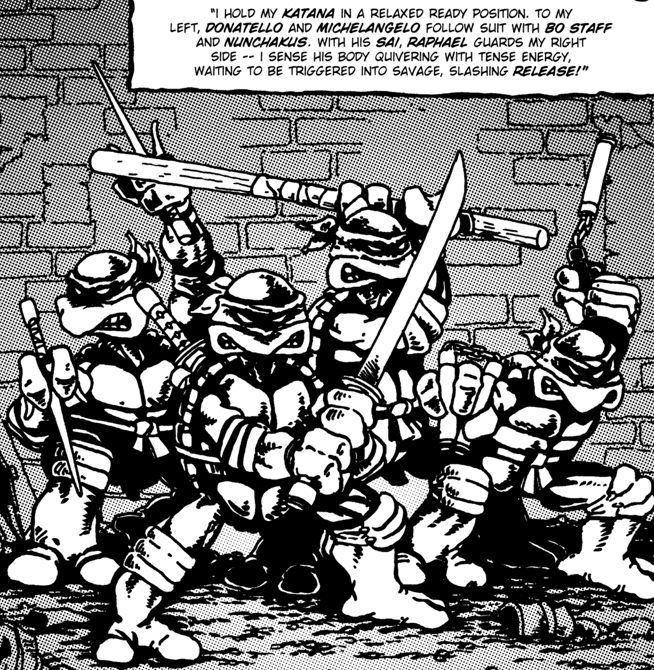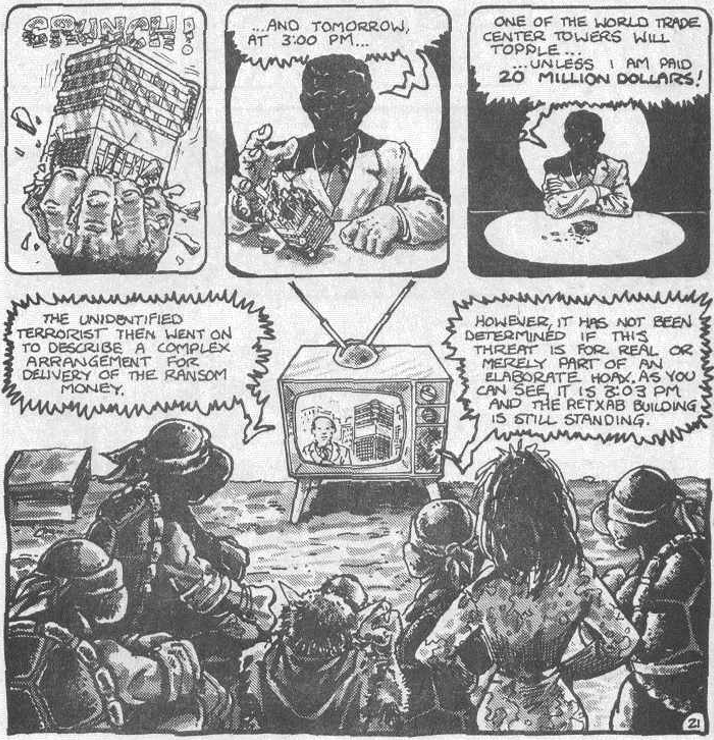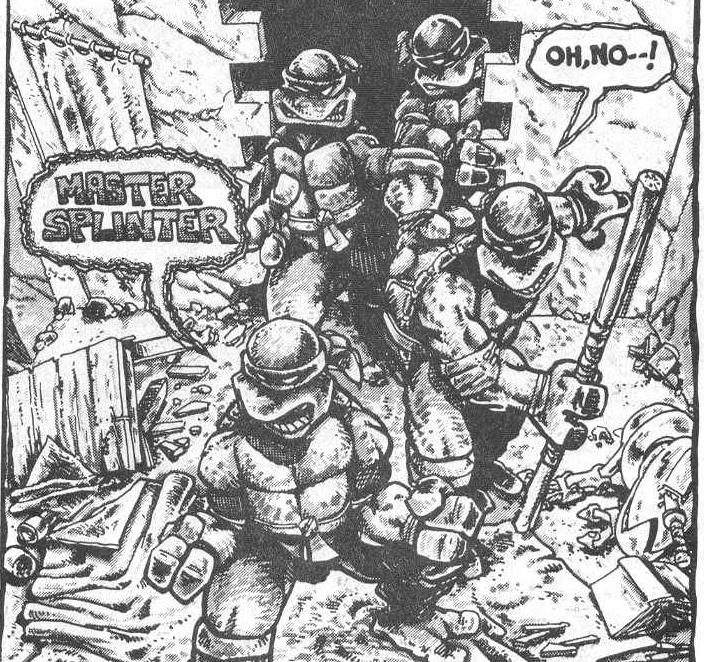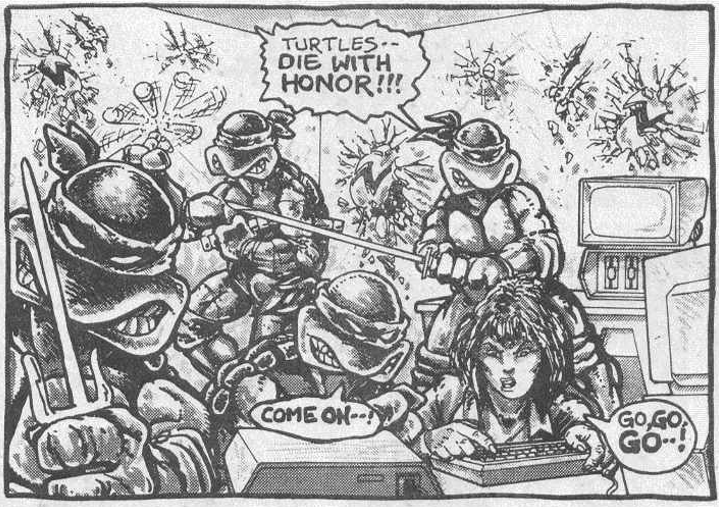You would have to search high and low for someone who has never heard of the Teenage Mutant Ninja Turtles. The classic 1980s animated series turned the heroes-in-a-half-shelf into a pop culture phenomenon, but while everyone has seen the TMNT cartoons and movies, finding true TMNT fans who have read the original Mirage comic books is a different story. While “cowabunga” and pizza with silly toppings are a fond nostalgic memory for most, beer, blood, and action were the themes of the original Kevin Eastman and Peter Laird comic books.
Without a doubt, the first few issues of TMNT are the most important, and set the base for the turtles, their origin, and their early rogues gallery. In Teenage Mutant Ninja Turtles #1, Kevin Eastman and Peter Laird waste no time telling their audience that these crazy creatures aren’t afraid to kick a little ass. After the turtles take down some street thugs, we meet Splinter, who provides the background to how these mutant turtles came to be, and reveals the secrets of his own origin involving his master, Hamato Yoshi, and the jealous Oroku Saki. When Oroku Saki resurfaces in New York, now known as the Shredder, Splinter orders his ninja to seek out and kill his arch nemesis.
The inevitable confrontation between the Shredder and the turtles is epic, even by today’s standards. Talk about a brilliant first issue. Eastman and Laird constructed nearly 40 pages of a unique idea mixed with classic storytelling and the action comic book readers crave. But my favorite part is just how much darker these turtles are than their Saturday morning cartoon counterparts.
Teenage Mutant Ninja Turtles #2 offers more staples within the TMNT universe. Dr. Baxter Stockman first appears as the mad terrorist creator of the infamous mousers, and April O’Neil makes her debut, not as the rambunctious news reporter we know her to be, but as Baxter Stockman’s research assistant with a conscience. When Stockman leaves April to die in the New York city sewers, she eventually meets up with the turtles who don’t take kindly to Stockman’s threats against the city. Issue #2 is just as action filled as the first issue, and even though the dialog is a bit hokey, and the climax is a tad abrupt, it’s still an exciting and iconic issue in the history of the turtles.
TMNT #3 picks up right where issue #2 left off, and we see the turtles returning home to find that their master, Splinter, is missing, and their lair has been ransacked. The four mutant teens contact their new human friend, April, for a place to crash, which later leads to a high speed chase all across New York city when April’s van is mistaken for a vehicle resembling a get-away car in a recent bank heist. Yes, the coincidence creating this chase is silly, but Eastman and Laird don’t disappoint in delivering the action. Unfortunately, this chase bring the turtles no closer to finding their missing sensei, but in an epilogue we see Splinter being found by a group of T.C.R.I. agents (NOT T.G.R.I. agents, TMNT II: Secret of the Ooze fans), and we discover that T.C.R.I. has a bit more of an extraterrestrial sensibility that your average Techno Cosmic Research Institute.
In TMNT #4 we meet the turtles in the midst of their search for Splinter, which leads them to a massive brawl against some lurking Foot soldiers. As their battle culminates, the turtles discover the ostentatiously labeled T.C.R.I. headquarters, forcing the four ninjas, recognizing the initials on the chemical canister which caused their bizarre origin, to investigate. Within the mysterious facility, they unexpectedly find Master Splinter, and a dimension altering altercation with some extraterrestrial terrorists that sends the gang on their next weird adventure.
If you’re a fan of the TMNT, then you’ll easily recognize the parallels between the comics and the first two major motion pictures. Even though the set-up of these early conflicts of the TMNT seem like a mixture of bad Arnold Schwarzenegger action movies and WWE story lines, the creators still manage to keep you on your toes, and have you wanting much, much more by the end of each issue. Even though the Teenage Mutant Ninja Turtles are a household name today, their origins are from the indie comics scene, and reading these comics almost 30 years after their publication still offers that same alternative flavor from the typical superhero comics we’re so used to reading. If you’re interested in the TMNT even just a little bit, these early issues are absolutely worth a read, if for nothing else than the beautifully gritty art style and hilariously goofy plots.
For more on Ye Olde School Café‘s menu, click here!
Andrew Hurst
andrewhurst@comicattack.net
@andrewEhurst








Still one of my all time favorites!